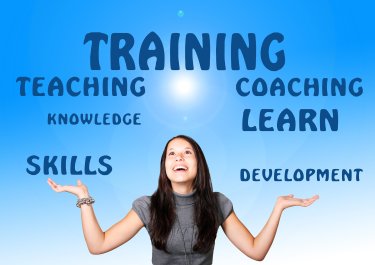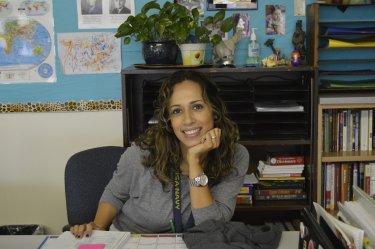I’m the “tech mentor” in my school. The responsibility of a tech mentor includes providing professional development to staff members, supporting teachers with technology in their classrooms and setting technology up for special events.
At the beginning of this school year, after two years of lobbying, I became the proud owner of a new 75” SMART board for the gymnasium. During the set-up of the device, I learned about an online professional development (PD) being offered for a technology-related teacher resource. The platform was created for classroom teacher use. I asked to be added to the list of teachers included in the PD.
The technology director asked me, “How will you use it?” I replied, “I won’t know until I take the professional development.” Her statement wasn’t intended to be condescending. She wasn’t trying to avoid spending a little extra money. She simply couldn’t foresee any use of this technology within my setting. And to be honest, it may turn out that there is no practical application for the system in physical education. But the only way to find out was to take the PD.

This brief interaction has become somewhat of a mantra for me: “I don’t know, what I don’t know.” There are few school-based professional development opportunities in my district that focus on improving physical education instruction. Many of my colleagues complain about having to sit through teacher trainings that “don’t apply to us.”
While it is true that districts nationwide could do a better job of addressing the needs of special-area teachers, we could all benefit by entering every class with an outlook that embraces learning for the sake of learning instead of being narrowly focused on our curriculum. We don’t know what we don’t know and going in with a closed mind only limits our profession. By viewing ourselves as educators instead of physical educators, we can take information from other disciplines and modify it to meet the needs of our students in the gymnasium.
This same interaction also got me thinking “they don’t know, what they don’t know.” By “they”, I mean pretty much everyone possessing preconceived notions about physical education. That includes parents, teachers, principals, directors, superintendents, school board members, and all others that haven’t had any professional development with regard to standards, best practices, and the health and educational benefits of physical education.
My principal for example, after his first observation of my class made a comment that sounded something like this: “I thought I knew what a good physical education class looked like, but I had no idea it could be so much more.” He has continually reminded me that he is looking to me and my colleagues to educate him. He now asks insightful questions and pushes us to advocate for quality physical education.
This past week, we met about a student. The conversation turned to the SHAPE America grade-level outcomes and standards that I use to guide my instruction. While I’m pretty sure he has had in-depth professional development on the Common Core Standards as they apply to ELA and Math, he has had no such training on the SHAPE America or NYS physical education standards. He was also unfamiliar with the section within Every Student Succeeds Act that includes physical education as part of a well-rounded education. Here is a leader in our school community willing to advance the goals of physical education but depending on his teachers as his source of pertinent information. Somehow, that strikes me as backwards.

While it is true that even with proper training many administrators will continue to view our discipline as a break from “real” education, I believe we have a responsibility to expand our professional development to reach beyond those educated in the HPE field. If we are to stand beside Math, Science and English Language Arts, we need to do a better job educating the professionals that lead education.
We need to find a way to be included in graduate level administration course work so that the next generation of principals, directors of curriculum and superintendents, have a working knowledge of the standards and best practices in our unique classroom. We also need to present at leadership conferences and conventions at state and national levels. And we need to publish in educational journals and newsletters so that those in the position to create real change have access to the knowledge and resources necessary to do so.
Too often, I hear of districts that don’t have a director of physical education or that have one in combination with health, athletics, driver’s education, wellness and school nurses. These professionals have good intentions but simply don’t have the time to devote to physical education when athletics demand so much of their time. Furthermore, directors are typically housed in one building leaving the day-to- day supervision of physical education programs up to building principals.
This lack of knowledge at the top contributes to the ineffective assessment of physical education teachers and stunts the growth of physical education across the nation. Classroom teachers are assessed and guided continually on how to improve instruction, but because our building leadership lacks the skills and knowledge to properly assess our performance, mediocrity is accepted without question.
In my opinion we cannot place blame on an educational system that devalues physical education if our educational leaders are ignorant about the grade-level outcomes and standards that guide us, the science that supports physical activity, and the best practices that should be followed daily in every gymnasium across the country.
Far too many of today’s educational leaders simply don’t know what they don’t know.
